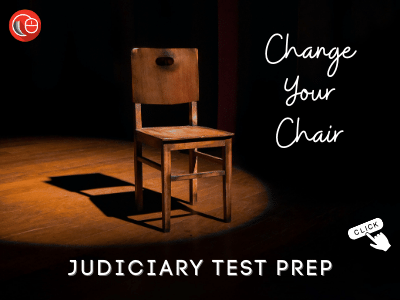This article is authored by Nidhi Bajaj, of Guru Nanak Dev University, Punjab. In this article, the author has undertaken a comprehensive study of the concept of criminal conspiracy as provided under the I.P.C.
This article has been published by Sneha Mahawar.
Table of Contents
Introduction
Conspiracy means a combination of two or more persons for unlawful purposes. It is an agreement between two or more persons to commit an illegal act. Criminal conspiracy is a substantive offence under the Indian Penal Code, 1860(I.P.C.). Generally, the accused is charged with the offence of criminal conspiracy along with the charge of some other substantive offence under the I.P.C. or any other law. Chapter V-A of the I.P.C. as inserted in 1913 deals with the offence of criminal conspiracy. In this article, the author will attempt to analyse the substantive offence of criminal conspiracy with the help of relevant case laws.

Background
Originally, the term ‘conspiracy’ was used to refer to the acts of agreement of two or more persons to institute a false legal case against someone or to carry on legal proceedings in a vexatious or improper way.
In Poulterer’s case(1611), the criminal aspect of conspiracy was developed for the first time by the Star Chamber and conspiracy was recognised as a substantive offence.
Brief facts of the case are: One Walters along with other defendants imputed a false charge of robbery on Stone and did everything possible to ruin his family’s reputation. Rumours were spread that Stone was a gentleman thief and a knave. However, Stone had an alibi and brought some 30 people to attest that he was in London on the day the alleged robbery took place. The jury found an ignoramus and Stone was discharged. Thereafter, Stone brought an action before the Star Chamber to clear himself of the imputations levelled against him and vindicate his reputation. The defendants attempted to settle the matter out of court and also tried to persuade Stone to drop the suit. However, when the process started, the defendants accused Stone of barratry and also intimated some of his witnesses. The court held that the mere presence of conspiracy among the defendants, irrespective of whether Stone was falsely indicted or acquitted is the gist of the offence and can be considered a crime.
The House of Lords in Mulcahy v. R.(1868) stated that “A conspiracy consists not merely in the intention of two or more but in the agreement of two or more to do an unlawful act by unlawful means. So long as such a design rests in intention only it is not indictable….” Thus, two or more persons must agree to carry it into effect and the very plot is an act in itself punishable for a criminal object or the use of criminal means.
Before the insertion of Chapter V-A, conspiracy under I.P.C. was punishable only in two forms-
- By way of abetment under Section 107 I.P.C.
- By way of involvement in a certain offence (Section 310, Section 401, Section 400 I.P.C.)
Then, in 1870, Section 121A was added which provided punishment for conspiracy to commit offences punishable by Section 121 i.e. conspiracy to wage or attempt to wage war against the Government of India.
It is thus clear that conspiracy per se was not a crime under I.P.C. before 1913. The Criminal Law Amendment Act of 1913 inserted Chapter V-A in the I.P.C. which introduced criminal conspiracy as a substantive offence.
Definition of Criminal Conspiracy
Section 120A I.P.C.
Section 120A of the I.P.C. defines criminal conspiracy as an agreement of two or more persons to do or cause to be done-
- An illegal act, or;
- An act that is not illegal by illegal means.
Section 43 of the I.P.C. defines the term ‘illegal’ as everything that is an offence or is prohibited by law or furnishes ground for a civil action.
The Proviso attached to Section 120A provides that a mere agreement to commit an offence shall amount to criminal conspiracy and no overt act or illegal omission is required to be proved. Such overt act is necessary only when the object of the conspiracy is the commission of an illegal act not amounting to an offence. It is immaterial whether the illegal act is the ultimate object of such agreement or is merely incidental to that object.
Ingredients
- Two or more persons agree to do or cause to be done an illegal act or an act which is not illegal by illegal means i.e. there must be at least 2 persons who conspire. However, a person may be indicted alone for the offence of criminal conspiracy if the other co-conspirators are unknown, missing or dead.
- Joint evil intent to do an illegal act or an act that is not illegal by illegal means is necessary.
Punishment of criminal conspiracy
Section 120B of I.P.C. provides for punishment of criminal conspiracy-
- Where the criminal conspiracy is to commit a serious offence: In cases where the conspiracy is to commit an offence-
- Punishable with death,
- Imprisonment for life or
- Rigorous imprisonment for a term of two years or upwards
- and where no express punishment is provided under the Code for such conspiracy,
every person who is a party to such a criminal conspiracy shall be punished in the same manner as if he had abetted such offence.
- Criminal conspiracy to commit offences other than those covered in the first category: Whoever is a party to such a criminal conspiracy shall be punished with imprisonment of either description for a term not exceeding six months or with fine or with both.
Proof of conspiracy
The offence of criminal conspiracy can be proved by either direct or circumstantial evidence. A conspiracy is usually hatched in a secret and private setting which is why it is almost impossible to produce any affirmative evidence about the date of the formation of the criminal conspiracy, the persons involved in it or the object of such conspiracy or how such object is to be carried out. All of this is more or less a matter of inference.
Section 10 of Indian Evidence Act, 1872
Section 10 of the Indian Evidence Act contains the principle that once a conspiracy to commit an illegal act is proved, an act of one conspirator becomes the act of another. Section 10 deals with the admissibility of evidence in a conspiracy case. It provides that anything said, done or written by any one of the conspirators in respect of their common intention is admissible against all the conspirators for proving the existence of the conspiracy or that any such person was a party to the conspiracy. However, the following conditions are to be satisfied before such fact can be admitted-
- There should be reasonable ground to believe that two or more persons have conspired to commit an offence or an actionable wrong.
- Anything said, done or written by any one of them about their common intention will be evidence against the others provided it is said, done or written after the time when such intention was first formed by any one of them.
Case Laws
Parveen v. State of Haryana (2021) SC
The brief facts of the case are: Four accused were being escorted by the police from the Central Jail, Jaipur by train to be produced in the Court of CJM, Bhiwani. On reaching the Railway Station Nangal Pathani, four young boys entered their compartment, attacked the police party and tried to rescue the accused. The accused, who were in custody also tried to escape and an attempt was also made to snatch the official carbine. It was alleged that one of the accused fired upon the Head Constable, who got injured and later succumbed to his injuries. One accused was apprehended and the other three fled. The accused were charged under offences Sections 224, 225, 332, 353, 392, 307, 302, 120-B of the IPC and for certain offences under the Arms Act. The accused were held guilty by the Sessions Court and on appeal, the High Court of Punjab and Haryana confirmed their conviction. The appellant Parveen @ Sonu filed an appeal in the Supreme Court.
The Hon’ble Supreme Court held that it is not safe to hold a person guilty for offences under Section 120B I.P.C. in absence of any evidence to show a meeting of minds between the conspirators for the intended object of committing an illegal act. The Court ordered the acquittal of the appellant and held that it is not safe to maintain the conviction of the accused on the alleged confessional statements of the co-accused in absence of any other corroborative evidence.
Kehar Singh and others v. State (Delhi Administration) (1988) SC
The Hon’ble Supreme Court, in this case, has held that the most important ingredient of the offence of conspiracy is an agreement between two or more persons to do an illegal act. Such an illegal act may or may not be done in pursuance of the agreement, but the very agreement is an offence and is punishable.
Major E.G. Barsay v. The State of Bombay (1962) SC
In this case, it was held that an agreement to break the law constitutes the gist of the offence of criminal conspiracy under Section 120A IPC. The parties to such an agreement are guilty of criminal conspiracy even if the illegal act agreed to be done by them has not been done. The Court also held that it is not an ingredient of the offence of criminal conspiracy that all the parties should agree to do a single illegal act and a conspiracy may comprise the commission of several acts.
Ram Narain PoplI v. C.B.I. (2003) SC
In this case, the Supreme Court held that mere proof of the agreement between two or more persons to do an unlawful act or an act by unlawful means is enough to convict the parties for criminal conspiracy under Section 120B.
Topandas v. State of Bombay (1955) SC
In this case, the appellant along with three others was charged with the offence under Section 120B read with Sections 471 and 420 I.P.C. for conspiracy to use forged documents. The Trial Court acquitted all the accused, but the High Court, in appeal reversed the acquittal of the appellant and convicted him for the substantive offence as well as for criminal conspiracy. In appeal, the Supreme Court held that it is a matter of common sense that one person alone can never be held guilty of criminal conspiracy for the simple reason that he cannot conspire. It was held that the appellant could not be convicted under Section 120B when his alleged co-conspirators were acquitted of that offence. When all the alleged co-conspirators have been acquitted, the accused alone cannot be held guilty for conspiracy unless it can be proved that he conspired to commit an offence not only with the co-accused but with some third person(s) who has not been tried, because he is minor or is absconding.
Leo Roy Frey V. Suppdt. Distt. Jail (1958) SC
The Hon’ble Supreme Court, in this case, held that the conspiracy to commit a crime is a different offence from the crime that is the object of the conspiracy. A conspiracy precedes the commission of the crime and is complete before the crime is attempted or completed.
Conclusion
The offence of criminal conspiracy comes under the category of inchoate crimes as it does not require the commission of an illegal act. Criminal conspiracy is a partnership in crime and a joint or mutual agency exists in each conspiracy for the prosecution of a common plan. Nowadays, it is seen that the provision of criminal conspiracy is very loosely invoked which is not in line with the principles laid down by the Supreme Court. Hence, it is very much required that the superior courts keep a check on the misuse of the provision while upholding the rule of law.
References
- KD Gaur, Textbook on Indian Penal Code, 6th Edn.
- https://www.barandbench.com/columns/criminal-conspiracy-law-applicability
- Batuk Lal, The Law of Evidence, 22nd Edn.
Students of Lawsikho courses regularly produce writing assignments and work on practical exercises as a part of their coursework and develop themselves in real-life practical skills.
LawSikho has created a telegram group for exchanging legal knowledge, referrals, and various opportunities. You can click on this link and join:
Follow us on Instagram and subscribe to our YouTube channel for more amazing legal content.
 Serato DJ Crack 2025Serato DJ PRO Crack
Serato DJ Crack 2025Serato DJ PRO Crack












 Allow notifications
Allow notifications


